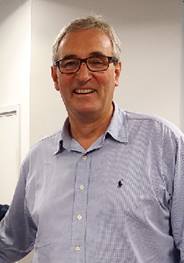Richard Langford ponders our increasing positional precision
Langford, R., Where do you think you are?
Geoscientist 28 (8), 9, 2018
https://doi.org/10.1144/geosci2018-006; Download the pdf here

Remember taking your first GPS unit out of the box? That was the beginning of the end for dodgy base maps and uncorrected aerial photographs. If you remember Bill Clinton removing Selective Availability—the intentional degradation of public GPS signals to aid national security—in 2000, you would soon realise that those maps and photos were an encumbrance, not an asset. Ironically, GPS uses a position-finding method that I was taught as an undergraduate—triangulation.
The art of triangulation is a slow, but pleasingly accurate way of position fixing, only if the three lines form a neat little triangle. Sitting on an exposure in the middle of a field in the Welsh Borderlands, Silva compass in hand, calculating my position was much more of a challenge than recording what I was sitting on.
Satellite triangulation now gives me coordinates, and satellite imagery has become more reliable for positioning, with Landsat and SPOT satellite measurements eclipsed by Google Earth/Digital Globe images. Until recently one aspect did not change: I still had to transfer the coordinates from GPS to notebook, and draw a little cross on the photo. Only then could I take time to look at the rocks. Clearly the world was topsy turvy, as where I thought I stood took precedence over what I was there to observe, sample and measure.
Now, I have a GPS in my tablet, so my beautifully triangulated position is captured with a click, sitting on an orthophotograph, backed up with a high-resolution digital elevation model. Another click and I can start typing my notes. The tablet can also record the dip and strike of any surface it sits on. Where I think I am is now relegated to its rightful place in subservience to my primary function as an observational scientist. But do I really know where I am?
We have been seduced by the speed and precision of GPS, ignoring the fact that it is often no more accurate than manual triangulation. But where you think you are will take on a new dimension over the next decade, as differential GPS converges with GPS. The Galileo satellite will get measurements in Europe down to 1 m (1 cm for a fee). Australia is spending A$255 million to obtain a precision of 3 to 5 cm for areas with mobile phone coverage, and up to 10 cm elsewhere. The enhanced GPS system will continuously correct positioning data to take account of Australia’s drift north-eastwards at a rate of about 7cm a year.
In the end, does it matter where you are, or think you are? A concern that used to occupy a significant part of a geoscientist’s time is now not only hidden in the background, but is also becoming alarmingly accurate. Next time you take a photograph in the field, think carefully about the position you record, and not just the precision of those coordinates. Is your position that of the observer, or the subject? Not long from now, that choice will matter.
*Richard Langford is a semi-retired exploration geologist.
Contact: [email protected]